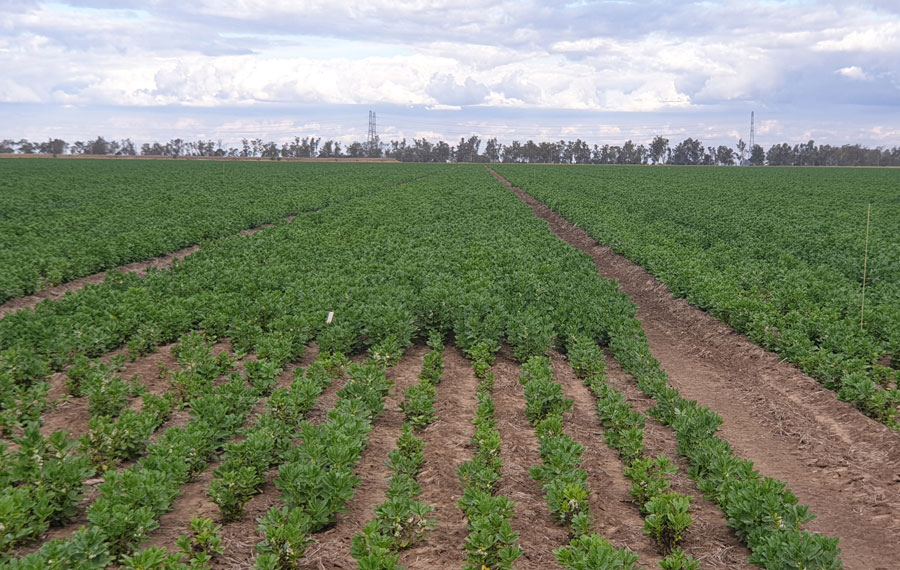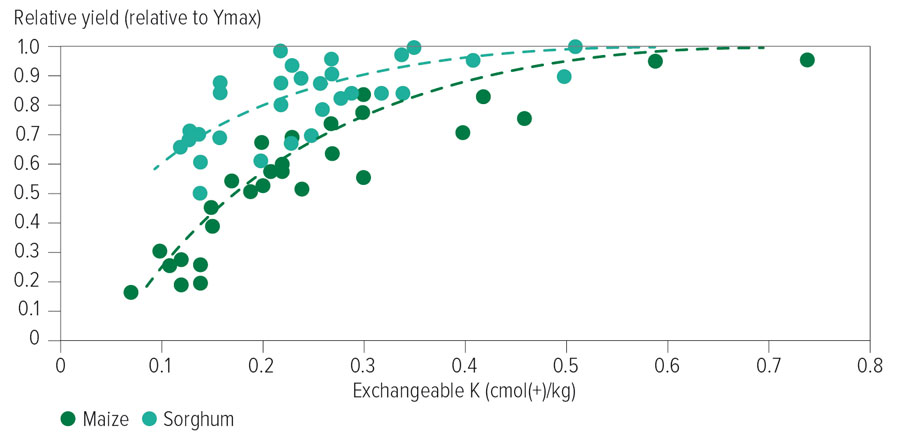 Professor Mike Bell. Photo: Mike Bell
Professor Mike Bell. Photo: Mike Bell
Key points
- Fertiliser recommendations need to be updated to better reflect changing farming systems and a broader range of crop species
- Seasonal conditions can have a profound effect on nutrient availability, particularly as no-till systems mean immobile nutrients such as phosphorus and potassium are likely to be concentrated in the often-dry, top few centimetres
Changing farming systems and a broader range of crops mean new data is needed to determine critical concentrations of soil nutrients.
Growers rely on soil test interpretations to identify whether fertiliser is needed and how much is required to achieve the water-limited yield potential.
Soil test values are compared to the target ‘critical nutrient concentration ranges’ needed for a crop to achieve 90 per cent of the nutrient-unlimited yield.
The ranges reflect the uncertainty around crop responses under different seasonal conditions and management systems, and are based on extensive research into nitrogen, phosphorus, potassium and sulfur requirements specific to each crop species.

There is limited existing research into fertiliser responses in pulses, oilseeds and coarse grains. The growth response from foreground to background in this faba bean crop near Jandowae, Queensland is due to overcoming phosphorus deficiency. Photo: Mike Bell.
Changing land management
However, most historical fertiliser trials have been with winter cereals (wheat and barley) and focused on nitrogen and phosphorus. Research into responses of pulses, oilseeds and coarse grains such as sorghum has been limited, as has research into other nutrients such as sulfur and potassium.
Historical trials were typically conducted in fields with full cultivation, so nutrients were well-distributed in the plough layer, rather than concentrated in the top few centimetres, as tends to happen with no-till.
Much of the existing research was also conducted more than 30 years ago, when cropping systems were quite different and soil fertility reserves were either higher (in the northern Vertosols) or lower (in some of the lighter-textured soils in the south and west).
To address these limitations, GRDC invested in a field program conducted at 18 to 20 research sites between 2017 and 2020. Led by the University of Queensland, the team – which includes the South Australian Research and Development Institute (SARDI), NSW Department of Primary Industries and the Department of Agriculture and Fisheries Queensland – has measured nutrient responses by 40 to 50 crops in each of the four years.
At each site, a ‘reference crop’ of wheat or sorghum was used to assess the ‘relative responsiveness’ of winter and summer pulses, oilseeds or coarse grains to increasing concentrations of the nutrient being studied (see example in Figure 1).
Figure 1: Contrasting relative yield responses of sorghum and maize to increasing soil potassium on a Ferrosol soil near Kingaroy, Queensland. Maximum yields in this 2018-19 season were 7.1t/ha for maize and 5.6t/ha for sorghum, with maize requiring higher exchangeable potassium to approach these target yields.

Source: Mike Bell
Relative differences were then extrapolated to a wider range of sites and soil types, using the more extensive trial datasets that already exist for the reference species.
The research has focused on identifying the responsiveness and critical soil test ranges of important pulses, oilseeds and coarse grains to differing soil concentrations of all four key nutrients to improve fertiliser recommendations.
Many of the trial sites experienced dry seasons prior to 2020, with results highlighting the consequences of estimating critical nutrient concentrations under those conditions.
Dry conditions
Dry seasonal conditions prior to 2020 limited yields and nutrient demand by crops and reduced the ability of roots to forage in topsoil layers where less-mobile nutrients, such as phosphorus and potassium, can be concentrated. This has meant a number of site-years were either unresponsive, or showed only small yield increases, even with high soil nutrient concentrations.
An example of the latter is a trial at Roseworthy in SA that found critical concentration ranges for phosphorus in wheat were two to three times the accepted concentrations. These were greatest in the 2018 crop (late sowing, water stress), but were also marked in the better-performing but still water-limited 2019. These seasonal differences were opposite what was expected on the basis of crop demand, suggesting a very inefficient nutrient uptake in drier conditions.

A four-year study is examining fertiliser responses for a broad range of crops including sorghum, here showing potassium deficiency. Photo: Mike Bell.
There have also been apparent differences in critical concentrations of nutrients between the reference crop and the other species (such as in Figure 1), but some of these differences may be due to seasonal conditions and not fundamental nutrient requirements.
For example, pulse and oilseed yields have often been less responsive to increasing phosphorus availability than wheat. However, we believe this apparent lack of response reflects the fact that our trials were conducted in dry seasons and often with a sharp finish. Pulses and oilseeds typically have a lower tolerance to stress andsuffer a greater yield penalty than cereals. While you do not need much nutrient to grow a low-yielding crop, you cannot capitalise on a good season without nutrients.The wetter 2020 season is providing a welcome opportunity to better test this hypothesis.
The project data will be added to the existing bank of soil testing data and will also generate guidelines about how much fertiliser is required to change soil nutrient concentrations and how quickly those concentrations decline after fertiliser application.
More information: Professor Mike Bell, 07 5460 1140, m.bell4@uq.edu.au

























































